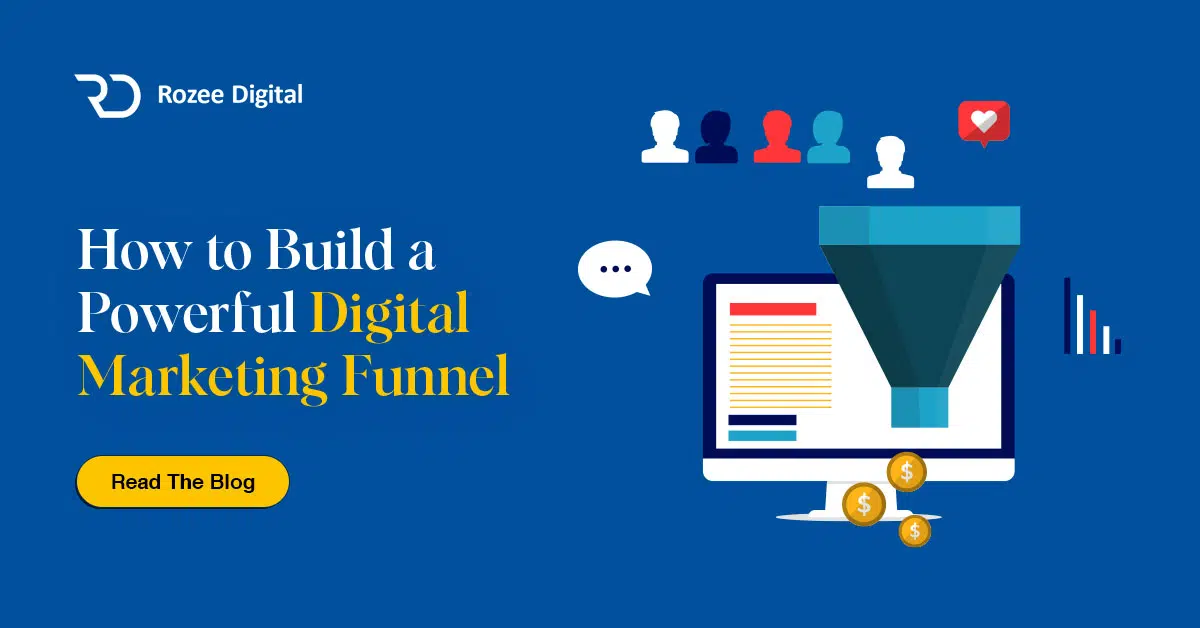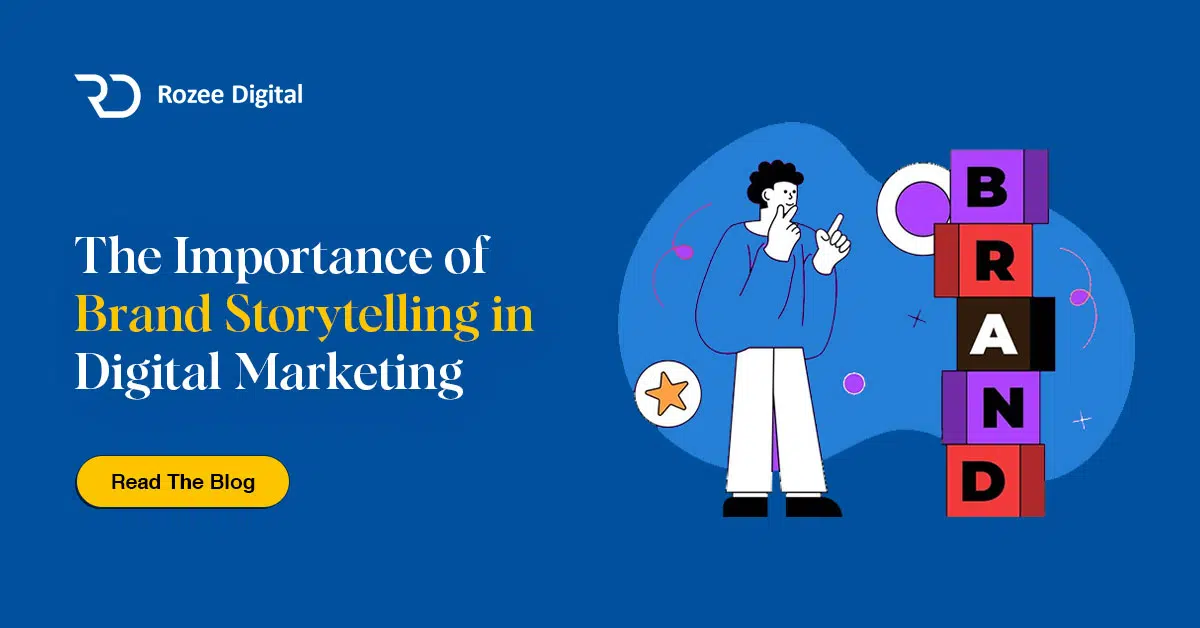Introduction to Conversion Rate Optimization
In the highly competitive world of ecommerce, conversion rate optimization (CRO) plays a crucial role in driving business success. By optimizing the conversion rate, businesses can maximize the number of website visitors who take the desired action, such as making a purchase or filling out a form. In this section, we will explore what conversion rate optimization is and why it is important for ecommerce brands.
What is Conversion Rate Optimization?
Conversion Rate Optimization (CRO) is the process of improving the percentage of website visitors who convert into customers or complete a desired action. It involves analyzing user behavior, identifying barriers to conversion, and implementing strategies to enhance the user experience and increase conversion rates.
CRO encompasses a range of techniques, including improving website design and usability, optimizing call-to-actions (CTAs), streamlining checkout processes, and utilizing data-driven insights to make informed decisions. The goal is to create a seamless and compelling user journey that guides visitors towards the desired outcome.
Why is Conversion Rate Optimization Important for Ecommerce Brands?
For ecommerce brands, conversion rate optimization is of paramount importance. It directly impacts the bottom line by increasing sales, revenue, and overall business growth. Here are a few key reasons why CRO is crucial for ecommerce brands:
- Maximizing ROI: By increasing conversion rates, ecommerce brands can generate more revenue from their existing website traffic. This means getting more value out of the marketing efforts and investments made to drive traffic to the website.
- Competitive Advantage: In a crowded online market, standing out from the competition is vital. A well-optimized website with high conversion rates can help ecommerce brands differentiate themselves and attract and retain customers.
- Improved User Experience: Conversion rate optimization focuses on enhancing the user experience throughout the customer journey. By providing a seamless and user-friendly experience, ecommerce brands can build trust, increase customer satisfaction, and encourage repeat purchases.
- Data-Driven Decision Making: CRO relies on analyzing data and metrics to make informed decisions. By leveraging tools such as A/B testing, heatmaps, and conversion funnel analysis, ecommerce brands can gain valuable insights into user behavior and preferences, allowing them to make data-driven optimizations.
- Cost-Effectiveness: Compared to acquiring new customers, converting existing website visitors into customers is often more cost-effective. By optimizing conversion rates, ecommerce brands can increase revenue without significantly increasing their marketing spend.
By embracing conversion rate optimization, ecommerce brands can unlock the full potential of their websites and revolutionize their businesses. In the following sections, we will delve into specific strategies and techniques that can help enhance conversion rates and drive business growth.
Understanding the Conversion Funnel
To effectively optimize conversion rates, it is essential to understand the concept of the conversion funnel and how customers progress through its stages. By comprehending this process, ecommerce brands can identify potential roadblocks and implement strategies to improve conversions.
The Stages of the Conversion Funnel
The conversion funnel consists of several stages that a customer goes through before making a purchase. These stages are:
- Awareness: At this stage, potential customers become aware of your brand, products, or services. They may discover your website through various channels such as social media, search engines, or referrals.
- Interest: Once aware, customers develop an interest in what your brand offers. They may explore your website, read product descriptions, and compare options. It is crucial to provide engaging content and a user-friendly experience to keep them interested.
- Desire: At this stage, customers develop a desire to own your product or service. They may be convinced by the benefits, features, or unique selling points. Clear and persuasive product descriptions, customer reviews, and visuals can help create this desire.
- Action: The final stage of the conversion funnel is where customers take action and make a purchase. This could involve adding items to their cart, proceeding to checkout, and completing the transaction.
Identifying Conversion Roadblocks
To optimize conversion rates, it is essential to identify and address any roadblocks that hinder customers from moving through the conversion funnel smoothly. Common roadblocks can include:
- Complicated Navigation: If customers struggle to find what they are looking for or navigate your website effectively, it can lead to frustration and abandonment. Ensure your website has clear menus, search functionality, and a logical structure.
- Lack of Trust: Customers may hesitate to make a purchase if they don’t trust your brand or website. Address this by displaying trust signals such as customer reviews, security badges, and clear contact information.
- Slow Page Load Times: Slow-loading pages can significantly impact conversions. Optimize website speed and performance to ensure a seamless browsing experience. For more information on website optimization, check out our article on website conversion optimization.
- Confusing Checkout Process: A complicated or lengthy checkout process can lead to cart abandonment. Streamline the process by minimizing steps, offering guest checkout options, and providing clear instructions throughout.
By understanding the stages of the conversion funnel and identifying potential roadblocks, ecommerce brands can focus on implementing effective strategies to optimize conversion rates. Stay tuned for the upcoming sections that will dive into key conversion rate optimization strategies and the importance of testing and analytics.
Key Conversion Rate Optimization Strategies
To increase your conversion rate and maximize your ecommerce brand’s success, implementing effective conversion rate optimization strategies is essential. By focusing on improving user experience, website speed, call-to-actions (CTAs), and the checkout process, you can significantly enhance your conversion rates and drive more sales.
User Experience (UX) Optimization
Optimizing the user experience (UX) of your website plays a vital role in converting visitors into customers. By creating a seamless and intuitive browsing experience, you can keep users engaged and encourage them to take desired actions. Some key elements to focus on for UX optimization include:
- Navigation: Ensure your website has clear and easy-to-use navigation menus, allowing users to find what they’re looking for quickly. Use logical categorization and provide search functionality to enhance user experience.
- Visual Design: Create a visually appealing website design that aligns with your brand identity. Use high-quality images, readable fonts, and a consistent color scheme to maintain a professional and aesthetically pleasing appearance.
- Content: Provide relevant and engaging content that adds value to your visitors. Craft compelling product descriptions, informative blog articles, and captivating visuals to keep users interested and informed.
- Landing Pages: Optimize your landing pages to provide a seamless transition from ads or external links. Ensure the landing page content matches the ad copy and delivers on the promise made to the user. For more information, check out our article on landing page optimization.
Website Speed and Performance
A slow-loading website can significantly impact your conversion rates as users tend to abandon sites that take too long to load. Optimizing your website’s speed and performance is crucial for delivering a smooth and efficient user experience. Consider the following strategies:
- Optimized Images: Compress and optimize images to reduce file sizes without compromising quality. This helps improve page load times, especially on mobile devices.
- Caching: Implement browser caching to store certain elements of your website, such as images and stylesheets, locally on users’ devices. This reduces the need to load these resources from scratch with each visit.
- Minification: Minify your CSS and JavaScript files by removing unnecessary characters and whitespace. This reduces file sizes and improves page load times.
- Content Delivery Network (CDN): Utilize a CDN to distribute your website’s content across multiple servers worldwide. This helps deliver content to users from the server closest to their location, reducing latency and improving load times.
Clear Call-to-Actions (CTAs)
Effective CTAs are crucial for guiding users towards desired actions, such as making a purchase or signing up for a newsletter. Clear and compelling CTAs can significantly improve your conversion rates. Consider the following tips:
- Visibility: Ensure your CTAs are prominently displayed on your website, using contrasting colors and appropriate sizing to make them stand out.
- Clarity: Use concise and action-oriented language for your CTAs, clearly stating what users can expect when they click. For example, instead of saying “Learn More,” use “Shop Now” or “Sign Up Today.”
- Placement: Position your CTAs strategically, placing them in visible locations throughout your website, including landing pages, product pages, and even the checkout process. Experiment with different placements to see what works best for your audience.
Simplified Checkout Process
A complicated and lengthy checkout process can lead to cart abandonment and hinder conversion rates. Streamlining the checkout process can make it easier and more convenient for users to complete their purchase. Consider the following strategies:
- Guest Checkout: Offer a guest checkout option to eliminate the need for users to create an account. This reduces friction and speeds up the checkout process.
- Progress Indicators: Clearly display the steps involved in the checkout process, providing users with a sense of progress and reducing any uncertainty or frustration.
- Multiple Payment Options: Offer a variety of payment options, including credit cards, digital wallets, and alternative methods, to accommodate different user preferences.
- Address Autofill: Implement address autofill functionality to save users time and reduce errors when entering their shipping and billing information.
By implementing these key conversion rate optimization strategies, you can enhance the user experience, streamline the purchasing process, and ultimately increase your ecommerce brand’s conversion rates. Remember to continuously monitor and analyze your website’s performance, gather customer feedback, and iterate on your strategies to drive ongoing improvement.
Testing and Analytics for Conversion Rate Optimization
To effectively improve your conversion rates, it is essential to rely on testing and analytics. These strategies provide valuable insights into user behavior and help identify areas for improvement. In this section, we will explore three key techniques: A/B testing, heatmaps and click tracking, and conversion funnel analysis.
A/B Testing
A/B testing, also known as split testing, is a widely used method in conversion rate optimization. It involves comparing two or more versions of a webpage or element to determine which performs better in terms of conversions. By presenting different variations to users and measuring their responses, you can pinpoint the elements that have the most significant impact on conversion rates.
For example, you might test different headlines, images, or call-to-action (CTA) buttons on your landing page to see which combination generates higher conversions. By analyzing the data collected from A/B tests, you can make informed decisions about which elements to keep or modify to optimize your conversion rates.
Heatmaps and Click Tracking
Heatmaps and click tracking provide visual representations of user interactions on your website. Heatmaps use color-coding to show areas of high and low user engagement, while click tracking records and analyzes user clicks on specific elements of your webpages. These tools can help you identify patterns, understand user behavior, and determine which areas of your website are most effective in driving conversions.
By analyzing heatmaps and click tracking data, you can identify common user behaviors such as scrolling patterns, areas of interest, or elements that receive the most attention. This information can guide your decision-making process when optimizing page layouts, content placement, and CTA positioning.
Conversion Funnel Analysis
Understanding the conversion funnel is crucial for identifying points of friction or potential roadblocks that impede conversion rates. The conversion funnel represents the stages a user goes through, from the initial visit to the final conversion. Analyzing the conversion funnel allows you to pinpoint areas where users drop off or fail to complete desired actions.
By analyzing the data from the conversion funnel, you can identify specific pages or steps in the process that may need improvement. For example, you might discover that the checkout page has a high abandonment rate, indicating potential issues with the checkout process or payment options. By addressing these issues, you can optimize the conversion funnel and improve overall conversion rates.
Utilizing these testing and analytics strategies can provide valuable insights into user behavior and help you identify areas for improvement. By implementing data-driven changes based on A/B testing, heatmaps and click tracking, and conversion funnel analysis, you can optimize your website to maximize conversion rates.
Remember to regularly monitor and track your metrics to ensure ongoing success. Additionally, consider integrating customer feedback and surveys into your optimization process, as they can provide valuable insights into user preferences and pain points. With an iterative approach to testing, refinement, and continuous improvement, you can revolutionize your business and boost your conversion rates.
Optimizing for Mobile Conversion Rates
With the increasing popularity of mobile devices, optimizing your website for mobile conversion rates is crucial for the success of your ecommerce brand. In this section, we will explore three key strategies to improve mobile conversions: mobile-first design, responsive and mobile-friendly websites, and streamlined mobile checkout.
Mobile-First Design
Mobile-first design is an approach that prioritizes the mobile user experience when designing a website. With more users accessing websites through their mobile devices, it’s essential to ensure that your website is optimized for smaller screens. This includes using responsive design techniques, optimizing the layout for smaller resolutions, and utilizing mobile-friendly navigation menus.
By adopting a mobile-first design philosophy, you can create a seamless experience for your mobile users, making it easier for them to navigate your website, explore products, and make purchases. Remember to keep important elements, such as clear call-to-actions (CTAs) and product information, easily accessible on mobile screens.
Responsive and Mobile-Friendly Websites
A responsive website adapts its layout and design to fit different screen sizes, providing an optimal viewing experience across various devices. By implementing a responsive design, you ensure that your website is accessible and user-friendly on both desktop and mobile devices.
To create a responsive website, focus on fluid layouts that adjust to different screen sizes, scalable images that load quickly on mobile devices, and mobile-friendly navigation menus that are easy to use on touchscreens. By providing a seamless and consistent experience across devices, you can increase engagement and conversions.
Streamlined Mobile Checkout
A streamlined mobile checkout process is crucial for improving mobile conversion rates. Mobile users tend to have less patience and limited screen space, so it’s important to simplify the checkout process as much as possible.
Consider implementing guest checkout options to eliminate the need for creating an account, as well as one-click payment options to save time for returning customers. Additionally, optimize the checkout form for mobile devices by reducing the number of required fields and utilizing autofill features to speed up the process.
By creating a seamless and efficient mobile checkout experience, you can reduce cart abandonment rates and increase conversions on mobile devices.
Optimizing your website for mobile conversion rates is a continuous process. Regularly monitor your website’s performance using analytics tools and conduct user testing to identify any friction points or areas for improvement. Don’t forget to gather customer feedback and utilize heatmaps and click tracking to gain insights into user behavior and preferences.
Remember, a well-optimized mobile experience can significantly impact your conversion rate optimization efforts and contribute to the overall success of your ecommerce brand.
Continuous Optimization and Improvement
To truly revolutionize your business and maximize your conversion rates, it’s essential to adopt a mindset of continuous optimization and improvement. This involves actively monitoring and tracking metrics, gathering customer feedback and surveys, and conducting iterative testing and refinement.
Monitoring and Tracking Metrics
To measure the effectiveness of your conversion rate optimization strategies, it’s crucial to monitor and track key metrics. These metrics provide valuable insights into the performance of your website and help identify areas for improvement. Some important metrics to consider include:
| Metric | Description |
|---|---|
| Conversion Rate | The percentage of website visitors who complete a desired action, such as making a purchase or signing up for a newsletter. |
| Bounce Rate | The percentage of visitors who leave your website after viewing only one page. A high bounce rate may indicate a lack of engagement or relevancy. |
| Average Session Duration | The average amount of time visitors spend on your website. Longer session durations often indicate higher engagement. |
| Exit Pages | The pages from which visitors commonly exit your website. Identifying these pages can help pinpoint potential issues that lead to visitor drop-off. |
By regularly monitoring these metrics, you can gain valuable insights into the effectiveness of your conversion rate optimization strategies and make data-driven decisions to improve your website’s performance.
Customer Feedback and Surveys
To gain deeper insights into your customers’ experiences and preferences, it’s essential to actively seek their feedback. Customer feedback can provide valuable insights into pain points, areas of improvement, and opportunities for optimization. Consider implementing the following methods to gather customer feedback:
- Surveys: Conduct online surveys to gather specific feedback from your customers. Ask questions about their browsing experience, satisfaction with the website, and suggestions for improvement.
- User Testing: Conduct user testing sessions where participants navigate through your website while providing real-time feedback. This can help uncover usability issues and areas of confusion.
- Customer Support Interactions: Pay close attention to customer support interactions, such as emails or live chat conversations. These interactions can provide valuable insights into common customer concerns and pain points.
By listening to your customers’ feedback, you can identify areas for improvement and make informed decisions to enhance the user experience.
Iterative Testing and Refinement
Iterative testing and refinement involve continuously testing different elements of your website and making incremental improvements based on the data collected. This helps you identify what works best for your target audience and refine your strategies accordingly. Some commonly used methods for iterative testing and refinement include:
- A/B Testing: Conducting A/B tests involves creating multiple versions of a webpage and randomly assigning visitors to different versions. By comparing the performance of these versions, you can determine which elements or designs are more effective in driving conversions.
- Heatmaps and Click Tracking: Heatmaps and click tracking tools provide visual representations of how users interact with your website. These tools can help identify areas of high engagement, as well as areas that are often overlooked or ignored by users.
- Conversion Funnel Analysis: Analyzing the conversion funnel can help you understand where potential bottlenecks or roadblocks occur. By identifying these obstacles, you can make targeted improvements to increase the likelihood of conversion.
Through iterative testing and refinement, you can continuously optimize your website for better conversion rates and overall business success.
By adopting a continuous optimization and improvement approach, you can stay ahead of the competition, enhance the user experience, and boost your conversion rates. Regularly monitor and track metrics, gather customer feedback, and conduct iterative testing and refinement to ensure your website is always optimized for maximum conversions.








